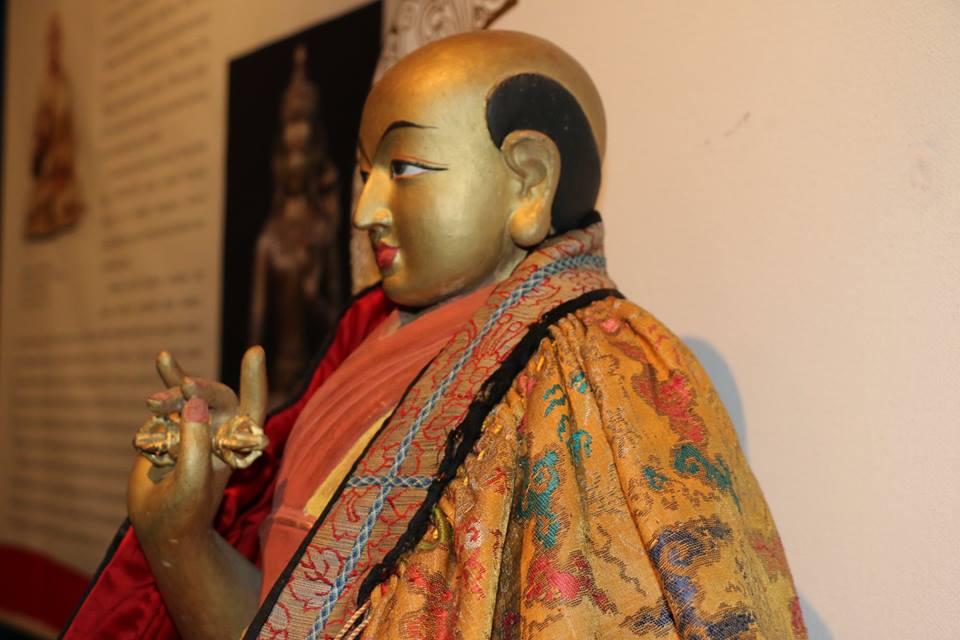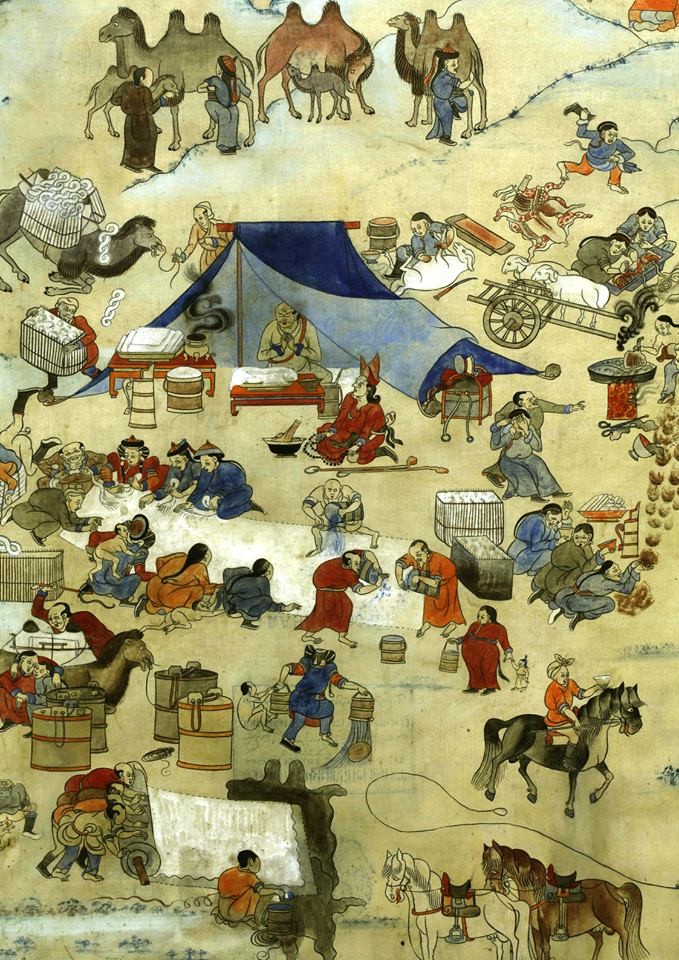The city of Ulaanbaatar offers numerous brilliant museums to visitors and residents. And the Fine Arts Museum of Zanabazar is a real treat for museum lovers and Buddhist art fans though it’s less famous compared to the Bogd Khan’s Winter Palace and the Choijin Lama Temple Museum. The Fine Arts museum was founded in 1966, and is renowned for displaying the precious works of G. Zanabazar – Mongolia’s first Buddhist leader, including the statues of Sita Tara, the Five Dhayani Buddhas and the Bodhi Stupa.
Initially opened with over 300 exhibits the museum now has 12 exhibition galleries covering Mongolian arts from ancient civilizations up to the beginning of the 20th century, comprising artistic works of Mongolian masters of the 18-20th centuries, Buddhist coral masks of Tsam dance rituals and exquisite Thangkas, as well as the famous paintings of B. Sharav entitled “A Day in Mongolia” and “Airag feast”. Modern arts are displayed separately in the Arts Gallery section of the museum, where the works of Mongolian contemporary artists are exhibitied regularly.

Zanabazar, also known as Undur Gegeen Zanabazar or the Bogd Jebzundamba (1635-1723), was the grandson of Abtai Sain Khan and a direct descendant of Genghis Khan. It’s said that at an early age little Zanabazar showed incredible talent at learning and arts, and miraclous occurences took place in his surroundings. He was crowned as the Buddhist leader of Mongolia at a tender age of 5 and was later sent to Tibet to advance his studies of Buddhism. Upon returning home Zanabazar started creating a distinctive Mongolian style in Buddhist arts and architecture, and earned his place in the world art history by producing a series of sculptures classified today as the style of the “Zanabazar school”, characterized as hollow, yet seamless brass castings expressing the ideals of philosophy, human beauty and mercy. Examples of such works exhibited in the museum are the “Dhyani Buddhas”, “White Tara”, and “Bodhi Stupa”.
The city of Ulaanbaatar offers numerous brilliant museums to visitors and residents. And the Fine Arts Museum of Zanabazar is a real treat for museum lovers and Buddhist art fans though it’s less famous compared to the Bogd Khan’s Winter Palace and the Choijin Lama Temple Museum. The Fine Arts museum was founded in 1966, and is renowned for displaying the precious works of G. Zanabazar – Mongolia’s first Buddhist leader, including the statues of Sita Tara, the Five Dhayani Buddhas and the Bodhi Stupa.
Initially opened with over 300 exhibits the museum now has 12 exhibition galleries covering Mongolian arts from ancient civilizations up to the beginning of the 20th century, comprising artistic works of Mongolian masters of the 18-20th centuries, Buddhist coral masks of Tsam dance rituals and exquisite Thangkas, as well as the famous paintings of B. Sharav entitled “A Day in Mongolia” and “Airag feast”. Modern arts are displayed separately in the Arts Gallery section of the museum, where the works of Mongolian contemporary artists are exhibitied regularly.

Zanabazar, also known as Undur Gegeen Zanabazar or the Bogd Jebzundamba (1635-1723), was the grandson of Abtai Sain Khan and a direct descendant of Genghis Khan. It’s said that at an early age little Zanabazar showed incredible talent at learning and arts, and miraclous occurences took place in his surroundings. He was crowned as the Buddhist leader of Mongolia at a tender age of 5 and was later sent to Tibet to advance his studies of Buddhism. Upon returning home Zanabazar started creating a distinctive Mongolian style in Buddhist arts and architecture, and earned his place in the world art history by producing a series of sculptures classified today as the style of the “Zanabazar school”, characterized as hollow, yet seamless brass castings expressing the ideals of philosophy, human beauty and mercy. Examples of such works exhibited in the museum are the “Dhyani Buddhas”, “White Tara”, and “Bodhi Stupa”.



